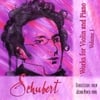 Want to know how I finished out the performance season this spring? I was the cannon in Tchaikovsky's 1812 Overture, banging away on the bottom keys of the glorious Yamaha DX-7 synthesizer complete with a cheesy "1812" sound patch. (You could probably guess, correctly, that this was a Memorial Day concert.)
Want to know how I finished out the performance season this spring? I was the cannon in Tchaikovsky's 1812 Overture, banging away on the bottom keys of the glorious Yamaha DX-7 synthesizer complete with a cheesy "1812" sound patch. (You could probably guess, correctly, that this was a Memorial Day concert.)
What fun! Did you know that the cannon part is notated with precise rhythms in the percussion score? I always thought it was just something that happened toward the end at the climactic places without much specificity. There's one really neat place where Tchaikovsky sounds the cannon in cross-rhythm - it "explodes" every three beats while the music is in four (or two, I can't exactly remember). That's what's supposed to happen, anyway.
Keyboard players just never know for sure what sounds they'll be making out there in the real world...
Image source
Saturday, May 31, 2008
POW!
Wednesday, May 14, 2008
Strauss and Mahler Arrangements
I will be involved in an interesting program of chamber ensemble arrangements of Romantic classics by Johann Strauss and Gustav Mahler next week at the Schuster Center in Dayton. The concert will be performed twice: there is a performance on Wednesday, May 21, at 6:30 PM and another on Thursday, May 22, at 10:00 AM.
The two works being presented are Strauss's waltz set Rosen aus dem Suden (Roses from the South), arranged by Arnold Schoenberg, and Mahler's Fourth Symphony in an arrangement/transcription by Erwin Stein. (Stein was a close friend and pupil of Schoenberg.) Both works are chamber versions that include considerable keyboard parts for piano and harmonium. I am excited because Mahler is not usually available to pianists - he wrote mostly gigantic symphonies for orchestra. Now's my chance to be the horns, oboes, flutes, and other instruments in this gorgeous symphony!
These arrangements were written specifically for performance by Schoenberg's organization in Vienna known as the Society for Private Musical Performances (in German: Verein für musikalische Privataufführungen). They were first performed in the year 1921. There were many of these kinds of "economical" arrangements on Society concert programs - the major aim of the organization was to enable experiences of modern music without the prohibitive cost of rehearsing larger forces. 1921, of course, was the year when hyper-inflation began to negatively affect the German economy. Indeed, the Society unfortunately suspended its activities in 1921 due to this financial turbulence.
But on the bright side, I'm certainly looking forward to helping recreate the energetic atmosphere of a Society-style concert from that tumultuous era.
To purchase tickets for this event, please see the webpage for this concert at the Dayton Phil site.
Monday, May 5, 2008
Stravinsky and Sting
Let me share my two weekend concert experiences: On Saturday night, I witnessed an energetic Cincinnati Symphony performance of The Rite of Spring. A spur-of-the-moment decision last week enabled Arpi and I to run up to Columbus on Sunday to catch The Police in concert! (The opening band was Elvis Costello and the Imposters.) How's that for variety?
You could say it was a raucous and rhythmic weekend. It is not every week that one can hear the Rite of Spring performed in the US. But much rarer is a concert by The Police, the classic progressive rock band that broke up in the mid-1980s and hadn't really reunited in performance for more than 20 years. We caught the North American leg of their international 2007-08 tour - and we're very glad we went. They all sounded as great as ever, but I have to say that the shining highlight was Stewart Copeland's drumming. The precision and sheer forcefulness of his rhythmic ideas just blew me away. At one point Copeland moved from the drum set to a large battery of percussion instruments (many of which were used by Stravinsky in the Rite) for a colorful rendition of Wrapped Around You Finger. The array of pitched and non-pitched percussion instruments (including a gong, crotales, and various cymbals and chimes) was brought to vivid life by Copeland, lending the pop tune a curiously modern-classical spectrum of sound. (Take a guess at what other well-known tune featured this battery of percussion.)
It's amazing how different back-to-back musical experiences can remind one of the immediate interconnections between all kinds of music. Certainly the Rite changed music forever, and not just the classical stuff. There's a lot in the music of The Police that would not be possible without the earthquake of Stravinsky's Rite. (Indeed, Police bassist and lead singer Sting has stated that he often prefers to listen to classical music rather than pop.) It's also a reminder that as time progresses the lines between classical and rock continue to be blurred, forever smeared by musicians who refuse to "keep it in the box." That's a positive thing.
Audiences for both concerts were totally engaged and responded with gung-ho applause and standing ovations. Maybe there's a little hope for classical music to reach people in the ways good rock music can.
Hopefully my ears will stop ringing by the time I have to start teaching today...
(For a review of the CSO performance, click here. For a review of a recent Police concert, see this.)







